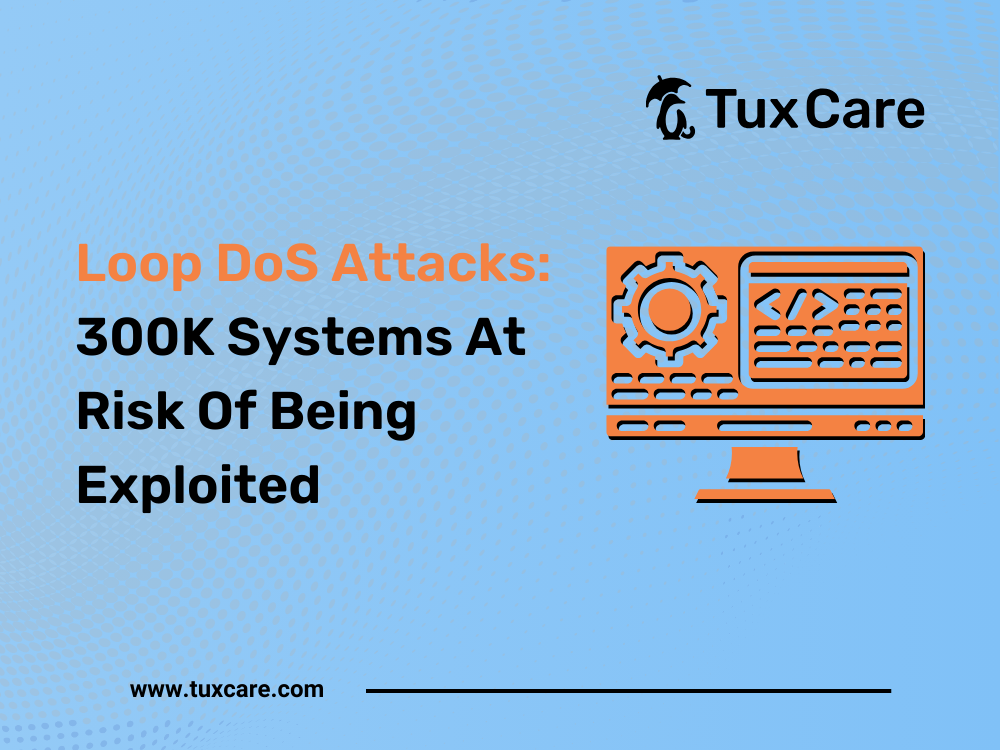Loop DoS Attacks: 300K Systems At Risk Of Being Exploited
In a digital landscape where cybersecurity threats constantly evolve, a recent discovery by researchers at the CISPA Helmholtz Center for Information Security has unveiled a new form of attack known as “Loop DoS.” Unlike traditional Denial of Service (DoS) attacks that inundate systems with excessive traffic, Loop DoS targets application-layer protocols through a cunning exploitation of cybersecurity vulnerabilities. In this blog, we will shed light on the intricacies of Loop DoS attacks, their potential impact, and strategies to mitigate this emerging threat.
Understanding Loop DoS Attacks
Traditional DoS attacks aim to overwhelm systems with a deluge of traffic, rendering them inaccessible to legitimate users. However, Loop DoS takes a different approach, exploiting vulnerabilities in application-layer protocols, such as DNS, NTP, and TFTP, which rely on the User Datagram Protocol (UDP) for communication.
Unlike the Transmission Control Protocol (TCP), UDP operates without establishing a connection between sender and receiver before transmitting data. While this characteristic makes UDP faster and more efficient, it also leaves it susceptible to exploitation. Attackers exploit this vulnerability by forging IP addresses in messages, initiating a self-perpetuating loop of communication between servers.
Loop DoS Attacks: Impact and Functionality
Understanding the various Loop DoS attack vectors is essential for effective cybersecurity defense strategies. In this attack, perpetrators forge IP addresses in messages sent to vulnerable servers.
By spoofing the IP address of a legitimate server, the attacker tricks the targeted server into believing the message is from a trusted source. Consequently, the server responds, initiating a loop of messages between the attacker and the victim. This relentless exchange overwhelms both servers, disrupting service for legitimate users.
One of the alarming aspects of Loop DoS attacks is their potential to impact a wide array of commonly used application-layer protocols, including DNS, NTP, TFTP, and even legacy protocols like Echo and Chargen. According to CISPA’s analysis, approximately 300,000 internet-facing systems could be vulnerable to this exploit, posing a substantial risk to organizations worldwide.
Loop DoS Attack Detection And Response
Jason Kent, Hacker In Residence at Cequence Security, emphasizes the resource consumption aspect of DoS attacks. He explains that attackers exploit vulnerabilities to consume system resources, leading to system crashes.
With Loop DoS, attackers can orchestrate attacks using just two hosts, causing cascading failures across environments. Kent suggests mitigating the threat by blocking UDP-type protocols and transitioning to TCP-based communication with authentication and monitoring.
Mitigating DoS Attack Impact
System administrators and IT security professionals are advised to take proactive measures to mitigate the risk of Loop DoS attacks. Implementing robust security measures, such as blocking UDP-type protocols and adopting TCP-based communication with authentication and monitoring, can significantly reduce vulnerability to such exploits. Additionally, staying informed about emerging network security threats and continuously updating security protocols are essential components of an effective defense strategy.
Conclusion
Loop DoS attacks represent a formidable threat to organizations, exploiting vulnerabilities in application-layer protocols to disrupt critical services. Protecting systems from DoS attacks is crucial for maintaining network security. By understanding the mechanics of these attacks and implementing DoS attack prevention strategies as well as proactive security measures, organizations can bolster their cyber defenses and safeguard against emerging threats.
As the cybersecurity landscape continues to evolve, staying vigilant and adaptable is paramount in ensuring the resilience of digital infrastructure against malicious actors.
The sources for this piece include articles in The Hacker News and Hack Read.



 Documentation
Documentation Login
Login




